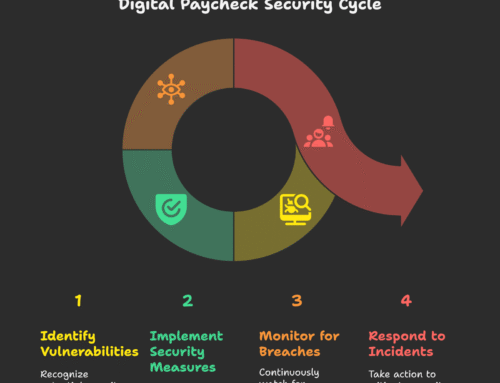For many employees, “all-hands meeting” translates to one thing: an hour of disengaged clock-watching while leadership runs through a deck of slides no one asked for. It’s not that all-hands meetings are inherently bad, it’s that they’re just often misused.
A genuinely worthwhile all-hands makes people feel connected to the mission, valued in their role, and energized about what’s ahead. This acknowledges that you’re not just managing time, you’re also managing attention.
Thankfully, there are certain ways to turn your next all-hands into something employees actually look forward to. Here are three strategies to help you do just that.
Image by Campaign Creators on Unsplash
1. Change the Setting—Literally
A change in scenery can very much reset how people engage with a meeting. When your all-hands consistently happen in the same room, or worse, on the same Zoom link, it’s easy for employees to mentally check out. The physical environment sets the tone, and stale surroundings usually lead to stale participation. This is already backed by data.
A 2024 yearlong study from the University of Perugia found that individuals working in
single offices reported self-perceived productivity levels up to 24.4% higher than those in shared offices, across all comfort conditions. Of course, with an all-hands meeting, you’re not going to use separate rooms, but the point here is that comfort certainly has an impact.
Thus, consider hosting your meeting in a new, energizing location. This doesn’t mean a luxury getaway every quarter, but it could mean moving to a more open, well-lit room or even holding the meeting outdoors when weather allows.
For special events, big city arrangements such as using a corporate event venue in Manhattan can make the meeting feel more high-stakes. On some level, everyone wants to feel like they work for Harvey Spectre from The Suits. So, even if it’s just one day of walking into a fancy skyscraper, the morale boost from hosting in such a venue is worth it.
As The Farm Soho notes, you can rent out co-working spaces, which have all the amenities you need for these meetings. Moreover, you don’t need to sign any long term leases or anything of that sort, which makes this option the most convenient.
Essentially, changing the location sends a clear signal by indicating that this isn’t business as usual. It’s a simple act, but it invites employees to bring a different mindset. This is because when a space feels fresh, the ideas shared within it often do too.
If you can pair a new setting with a well-planned agenda, you’re already halfway to a more engaging, memorable all-hands experience.
2. Put Purpose Before PowerPoint
One of the most common pitfalls in all-hands meetings is defaulting to a checklist of department updates, stacked back-to-back in a parade of PowerPoint slides. This leads to passive listening at best—and complete disengagement at worst.
Research by Daniel Jolles and Grace Lordan at the London School of Economics reveals something unsurprising. Out of 3,400 professional workers, 35% found meetings to be unproductive. This belief was consistent across all age groups. It’s safe to assume that sitting through bland presentations contributes to that dissatisfaction.
So, to make your meeting actually worth attending, start with this question: “What’s the one thing people should walk away feeling, knowing, or doing differently?”
When the purpose is clear, the structure becomes more intentional. Cut the slide deck bloat. Instead, frame updates around outcomes and stories. Highlight what a customer said, how a team overcame a tough challenge, or what’s changing in the company and why.
Instead of hearing from the same voices every time, rotate in individual contributors or team leads to tell a brief, compelling story. These micro-moments of storytelling make the content more human, relatable, and memorable.
When your team knows that the all-hands meeting is where they’ll get meaningful context—not just numbers—they’ll start to pay attention on purpose, not out of obligation.
3. Create Space for Two-Way Conversations
Remote work has decreased significantly in recent times, according to McKinsey & Company. This is partly due to the surge in in-person work that occurred between 2023 and 2024, something that big firms like Nike and Amazon desired.
With more and more companies calling people in, employees are expecting more of the same. The usual routine of leadership speaks, and employees listen. However, the most effective meetings create interaction, not just information flow. Employees are far more likely to stay engaged when they know their questions, ideas, and voices matter.
As Sheldon Arora, CEO of StaffDNA advises, in an All hands vision pitch, you want to make things inspiring. You want employees to get fired up to ‘take over the world.’ These company-wide presentations need to give employees a big picture view of the business.
There are many ways to do this. You can collect questions ahead of time from different departments to ensure wider representation. Better yet, invite team members to co-host parts of the meeting or run quick breakout sessions when relevant.
Vulnerability from leadership also plays a role here. When execs admit what didn’t go as planned, it builds trust and makes people feel safe sharing their own thoughts. All-hands meetings should be a platform where employees feel like participants, not spectators. Two-way engagement turns the meeting from a monologue into a dialogue, and that changes everything.
Frequently Asked Questions
1. What does an all-hands meeting mean?
An all-hands meeting is when everyone in a company—leaders, teams, and staff—gets together to hear updates, share big goals, and stay aligned. It’s meant to keep everyone on the same page and build a sense of unity across the whole organization.
2. What are good questions for all-hands meetings?
Ask questions that get people thinking and talking, like: “What’s our biggest challenge right now?”, “How can we support each other better?”, or “What’s one thing leadership could improve?” Honest, constructive questions keep the meeting real and actually helpful for everyone.
3. How to make all-hands meetings interesting?
Ditch the long slide shows. Share wins, real stories from the team, or even fun shoutouts. Keep updates short, add some humor, and open the floor for questions or quick polls. When people feel involved, they actually care about the meeting.
Long story short, an all-hands meeting is one of the rare opportunities where the entire team pauses to focus. That time is valuable and should be treated as such. The fact is that you don’t get many guaranteed moments of collective attention in a busy company.
However, if you are clear on purpose and encourage interaction, then a routine sync can become a meaningful cultural moment. One where people walk away not just informed, but also connected, aligned, and motivated.







Leave A Comment